The Artist Hated the KKK. West Point Is Removing Her Artwork Anyway.
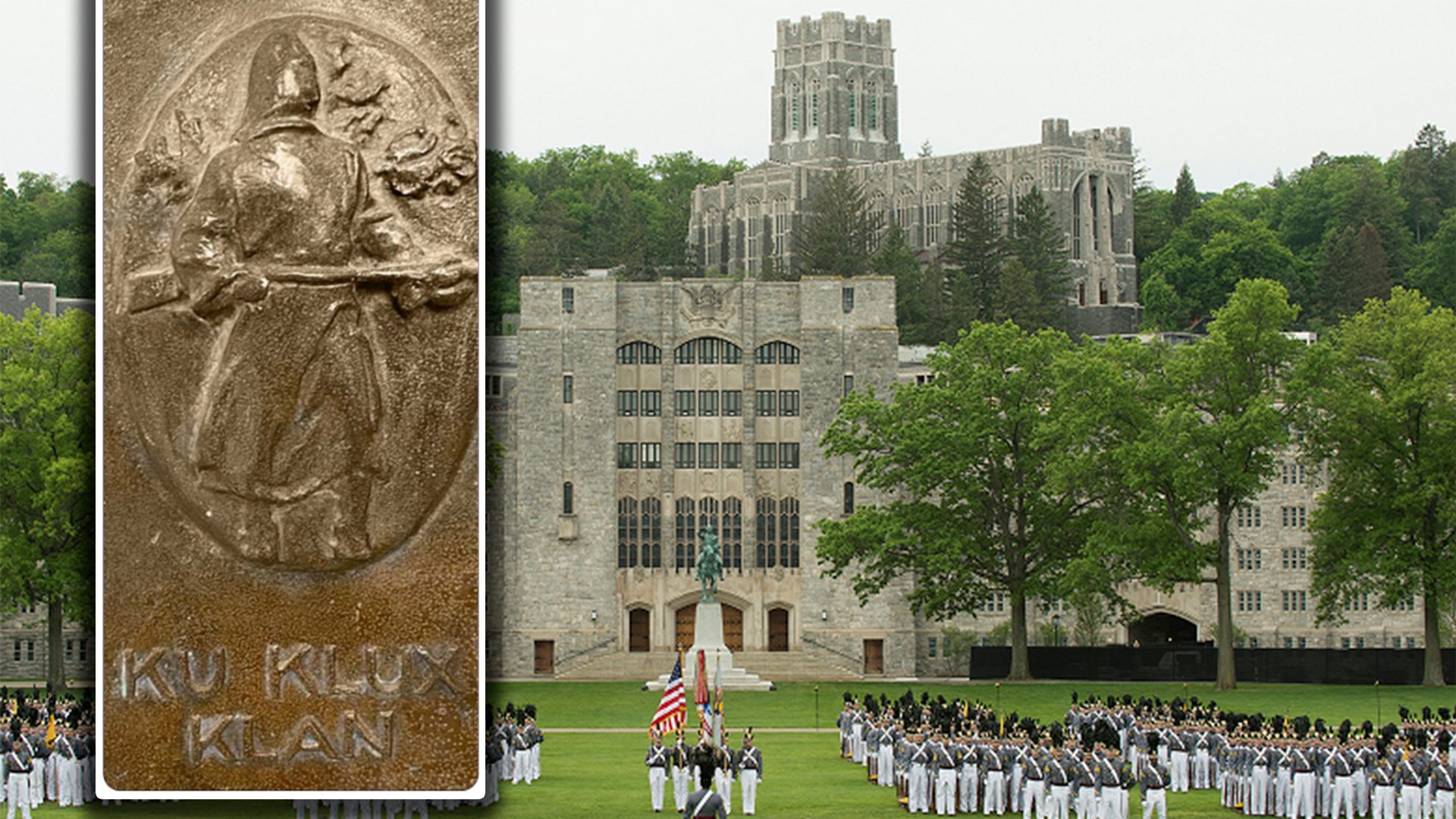
In 1965, New York-based sculptor Laura Gardin Fraser left no room for debate on how she viewed the Ku Klux Klan's place in US history.
The klan, she wrote, was “an organization of white people who hid their criminal activities behind a mask and sheet.”
Fraser laid out her unambiguous view of the post-Civil War terror group in notes she left to the United States Military Academy at West Point when she delivered a sprawling 11-foot, three-panel mural — a triptych — to the school at the request of a general.
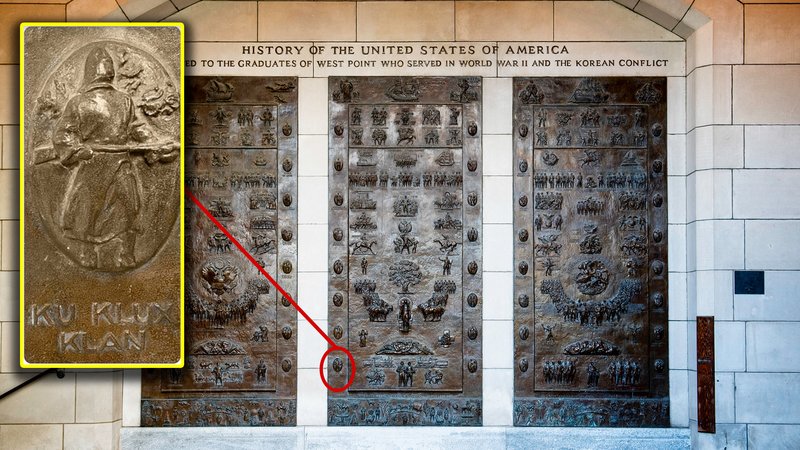
Context emerged August 31 behind the image of a Klansman icon on a plaque outside a science and engineering building at the US Military Academy, or West Point. Picture of mural courtesy West Point, klan image from federal Naming Committee.
The brass mural is a sweeping array of more than 200 images, most of them famous people or figures, ranging across US history from the arrival of Leif Erikson up to the 1960s.
Among the 200 images — which include abolitionists, World War II generals, and the Wright Brothers — is a hooded figure labeled as "Ku Klux Klan." Elsewhere on the mural are images of several Confederate generals and admirals, including Robert E. Lee, engraved next to their Union counterparts and President Abraham Lincoln.
In her notes on the artwork, available in West Point's archives, Fraser hoped the images of both famous and infamous US events and figures would inspire cadets as they entered the library inside Bartlett Hall (Bartlett is now home to engineering classrooms).
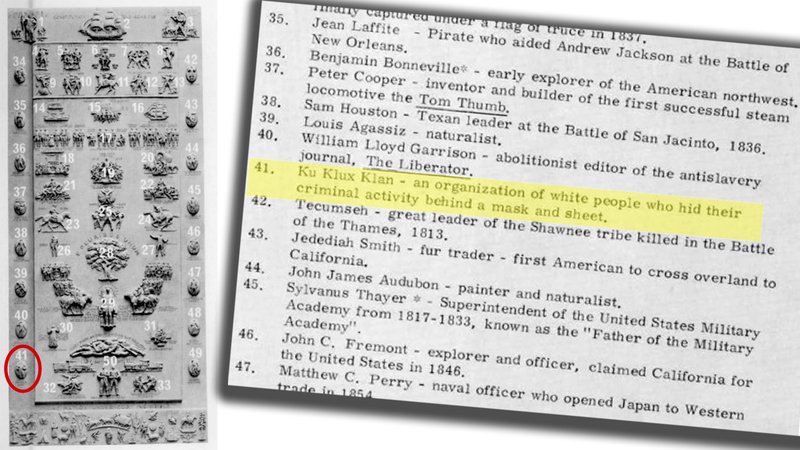
The mural's sculptor, Laura Gardin Fraser, wrote that the image of Klan on the mural was meant to illustrate it as "an organization of white people who hid their criminal activity behind a mask and sheet."
But the mural will soon be part of a campuswide cleansing that West Point announced this week of art and other "assets that require renaming, relocating, modification or removal" for ties to Confederate heritage.
West Point officials did not return inquiries from Coffee or Die Magazine on specific plans for the triptych, but a letter from Lt. Gen. Steven Gilland, the school's superintendent, said the triptych would be moved and stored "until a more suitable location is determined."
Gilland's letter, posted on a website that addresses the Confederate "remediation," says that several statues, images, and names of Robert E. Lee and other Confederate generals will be removed.
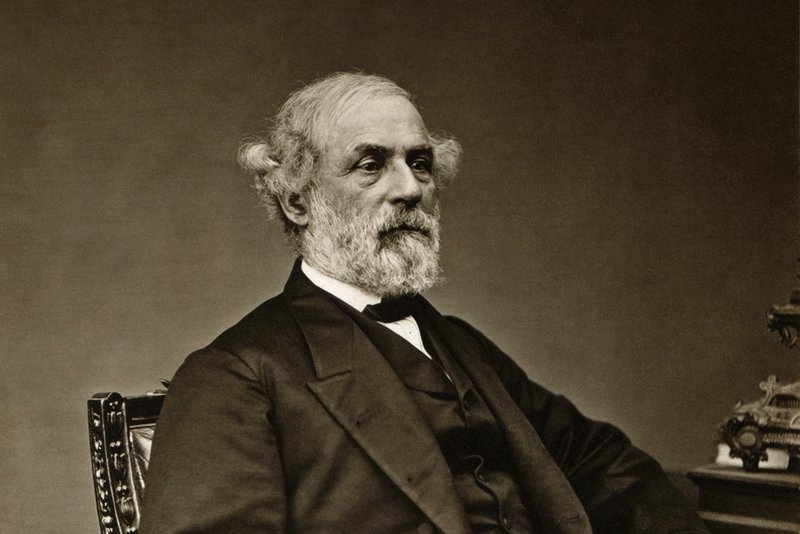
Robert E. Lee one year before his death. Photograph courtesy of Wikimedia Commons.
About a dozen Confederate-related assets were highlighted on the campus in August when the federal Naming Commission released its inventory of Confederate assets at both West Point and at the US Naval Academy.
The Naming Commission spent much of 2022 reviewing Confederate-themed names and locations across the Department of Defense, recommending that nine bases be renamed, including Fort Bragg and Fort Benning.
The commission's report on West Point made special note of the klan image on the triptych but did so with no context or description of its usage, nor any background on Fraser's reasons for including it on the mural.
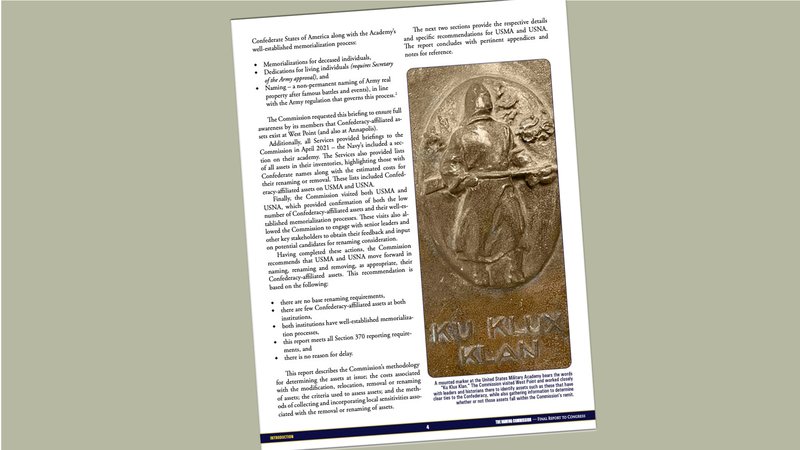
The Klan icon, depicted across a full page with no indication of context in a larger mural, in the Naming Commission report released Jan 29.
Many West Pointers were astonished to learn that the klan image existed on campus.
A Memorialization, History, and Museum Committee will recommend names to replace the names of streets, buildings, and areas around campus.
Hardee Place, named for Gen. William J. Hardee, the school said, is already in the process of being renamed.
Others include four locations named for Robert E. Lee:
- Lee Barracks (currently under renovation)
- Lee Housing Area
- Lee Child Development Center
- Lee Road
- Beauregard Place, named for Gen. P.G.T. Beauregard, a West Point graduate widely credited with designing the Confederate battle flag but who also championed Black voting rights in Louisiana in the years after the war
The school also said that a portrait of Lee would be removed from Jefferson Hall and a bust of the Confederate general would be removed from Reconciliation Plaza.
But the future of Fraser's triptych is unclear.
Fraser called the full mural The History of the United States of America, with each panel covering roughly a century of American history, including events prior to the nation's founding.
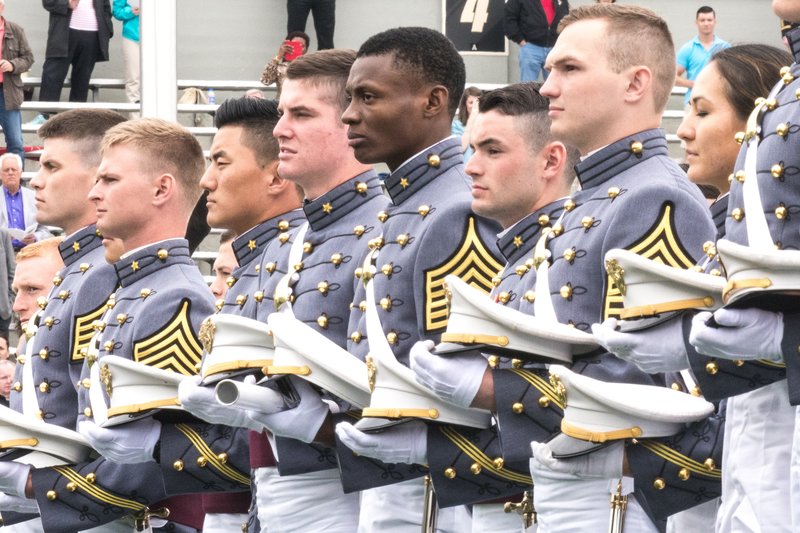
Newly commissioned 2nd Lt. Alix Schoelcher Idrache, became the Maryland Army National Guard’s first West Point graduate on May 21, 2016. Idrache, originally from Haiti, graduated at the top of his class in physics and will attend Army Aviation training at Fort Rucker, Alabama. Photo by Sgt. Ryan Noyes.
She dubbed the middle panel, "One Nation, Under God, Indivisible," and its images cover most of the 1800s, including the Civil War. Those sections contain the klan imagery, along with an illustration of both Union and Confederate generals — including Lee — gathered around President Lincoln.
Taken as a whole, the Civil War imagery takes a pro-Union slant, including an oak tree meant to represent the strong roots of the nation that allowed for reconciliation after the war.
"The grandeur and power of the oak symbolizes America as a single union which Lincoln was determined it must remain," Fraser wrote.
The hooded Klansman, bearing a rifle, is one of 16 historic figures depicted on the panel’s border, some of which are real people, while others are general archetypes. Others depicted in the same manner as the Klansman include women’s rights leader Susan B. Anthony, abolitionist William Lloyd Garrison, Sam Houston, Davy Crockett, and two Native American chiefs, Tecumseh and Osceola. There is also a “carpetbagger” icon.
Along with the Civil War-related iconography, the panel invokes the War of 1812, the completion of the transcontinental railroad, the opening of the Erie Canal, the Burr-Hamilton duel, and Horace Greeley’s early-century admonition to “Go west, young man!”
Another panel is dedicated to technology and the space age underway in the 1960s, while the first addresses early US history, including the Mayflower, Christopher Columbus, and a wide range of Revolutionary-era iconography like Betsy Ross and Paul Revere.
Read Next: Guided-Missile Destroyer Carney's Crew Battles Blaze, 6 Sailors Hurt
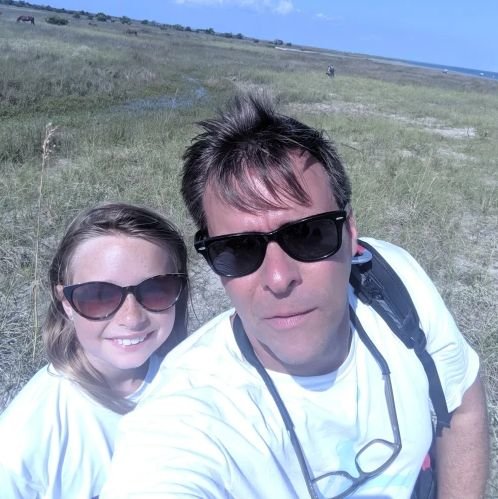
Matt White is a former senior editor for Coffee or Die Magazine. He was a pararescueman in the Air Force and the Alaska Air National Guard for eight years and has more than a decade of experience in daily and magazine journalism.
BRCC and Bad Moon Print Press team up for an exclusive, limited-edition T-shirt design!
BRCC partners with Team Room Design for an exclusive T-shirt release!
Thirty Seconds Out has partnered with BRCC for an exclusive shirt design invoking the God of Winter.
Lucas O'Hara of Grizzly Forge has teamed up with BRCC for a badass, exclusive Shirt Club T-shirt design featuring his most popular knife and tiomahawk.
Coffee or Die sits down with one of the graphic designers behind Black Rifle Coffee's signature look and vibe.
Biden will award the Medal of Honor to a Vietnam War Army helicopter pilot who risked his life to save a reconnaissance team from almost certain death.
Ever wonder how much Jack Mandaville would f*ck sh*t up if he went back in time? The American Revolution didn't even see him coming.
A nearly 200-year-old West Point time capsule that at first appeared to yield little more than dust contains hidden treasure, the US Military Academy said.












